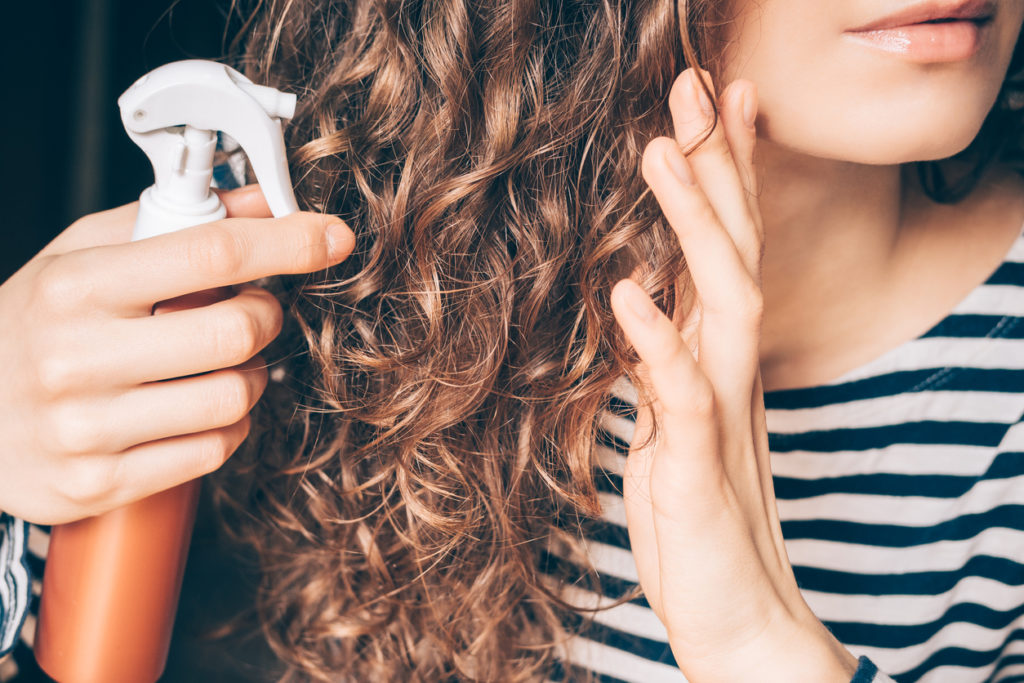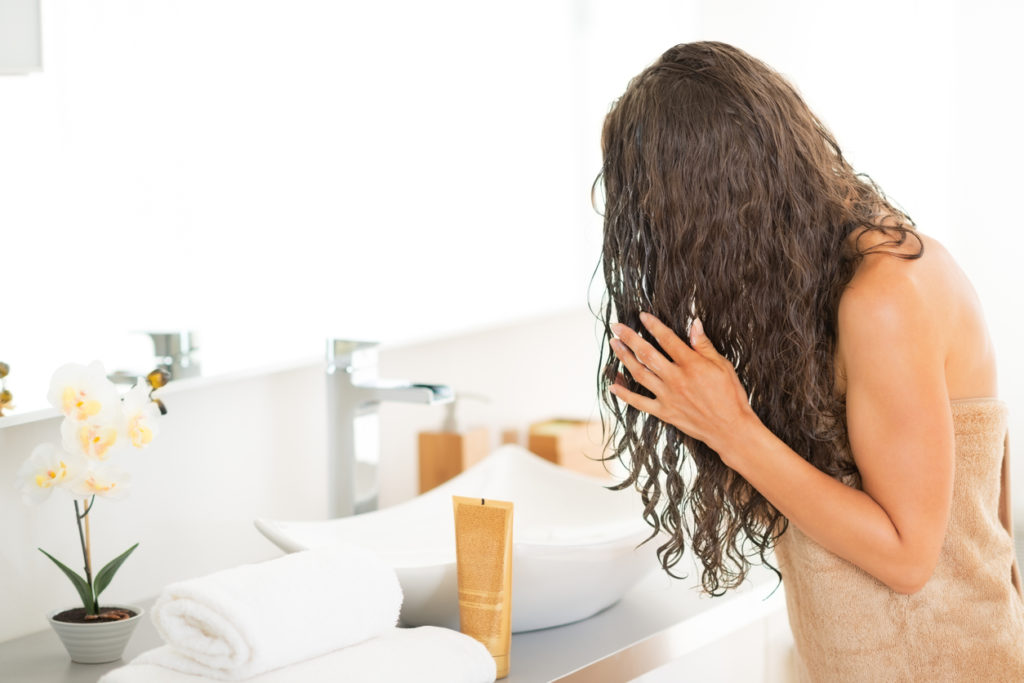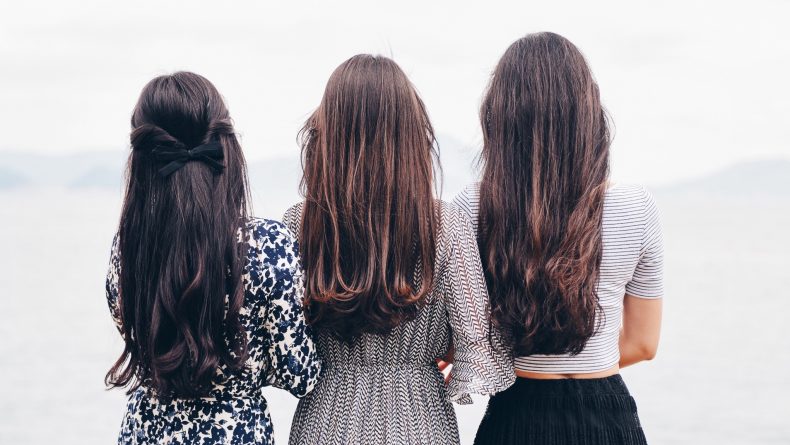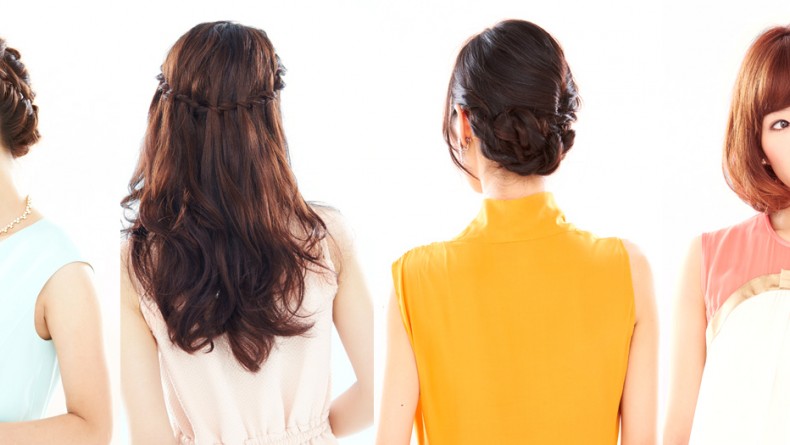6 Tips For Managing Curly Hair In Japanese Humidity
You Don't Have To Fight Your Kinks
The warmer weather may be beckoning us outside with the promise of summer, but those of us with curly hair are also bracing ourselves for the frizz that the Japanese heat and humidity inevitably bring.
Ironically, it was in Tokyo – where the majority of the population has straight hair – that I finally learned how to handle my curls. After walking out of my first salon appointment in Japan with a feather duster for a head, I decided to find someone who knew what they were doing. I eventually found Kiyoko at Nepenji salon, and thanks to her, I began to learn more about handling my hair. And here’s the good news: Frizzy hair doesn’t have to be inevitable. Armed with the right information and a few new habits, you can keep your curls intact through any season, including summer in Tokyo. Here’s what you can do.
1. Moisture, moisture, moisture
Curly hair is thirsty hair – it’s hard to give it too much in the way of moisture. When I learned that curly hair follicles tend to be more porous than those of straight hair, I began to understand why my hair became fluffy after a swim in a chlorinated pool or if I just hadn’t conditioned it enough. When curly hair follicles are well moisturized, the cuticles lie nice and flat and your hair looks glossier. But if they’re dry and looking for moisture, the cuticles open up and those strands of hair start sticking out – especially when the air around them is nice and humid. The first step in fixing curls that lack definition or are flyaway is to use more conditioner. Don’t be afraid to up the ante – you’ll work out how much is too much.

2. Ditch the shampoo
The flipside is making sure not to remove too much of your hair’s natural oils, and sulfates are a sure-fire way to do this. They dry your hair out because they act like detergents, which are great in the kitchen but shouldn’t go anywhere near your hair and skin.
Now, this doesn’t mean don’t clean your hair. There are a number of brands that don’t contain sulfates, including cult favorite DevaCurl’s NoPoo, and if you want to ditch conventional shampoos altogether, you might experiment with cream cleansers or a lavender oil rinse or spray (this essential oil is antimicrobial).
Ironically, it was in Tokyo – where the majority of the population has straight hair – that I finally learned how to handle my curls.
At the very least, don’t wash your hair too often. I generally only wash my hair with a no-sulfate shampoo once a week, and on in-between days rinse it with warm water and a lavender oil solution, then re-condition. Of course, this does heavily depend on your schedule and preferences.
3. Hands off those curls
Maybe you’ve already figured out the above – I had my suspicions for years, noticing how my hair responded to the frequency of washing and types of conditioner. But one area I’d never considered was the method in which I dried my hair. My whole life, after washing and conditioning, I would wring it out, give it a good rub, then twist it up into a towel.
Turns out this was contributing to my uneven curls and frizzy-ness. Curly hair is a little bit fragile, so by rubbing it with a towel I was roughing up the cuticles and by wringing and twisting I was preventing the curls from springing into their natural shape. With curls, a gentle touch goes a long way.
The best approach requires a bit more care but the result is worth it. After rinsing out your conditioner, squeeze your hair with a scrunching action. Then, while it is still dripping wet, carefully tip your head upside down and continue to scrunch the water out, this time using a soft t-shirt, microfiber towel or paper towels. (Regular bath towels are a bit too rough for this job, as they tend to rub up the cuticles.) Remember you’re not drying them completely at this point, just removing excess water.
Next – drip dry.

This might sound annoying, and of course, when you’re creating a particular style you’re going to want to get out the straightener or the curling iron. But for healthy curls, avoid direct heat. No blow-drying. You want to give them time to soak up that H2O without having it blasted out.
Instead, having squeezed some of the water out, simply pop a towel on your shoulders and go about your day (assuming you’re at home). You might want to use some hair clips to place certain sections where you want them or lift some curls, but otherwise – leave them be. Don’t touch them. Patience goes a long way with curls.
4. Know that not all products are created equal
A few notes on products, because let’s be honest, those of us with curly hair do rely on getting this right.
First, avoid shampoos and conditioners with silicone in them, as it tends to coat the hair follicle and weigh it down. (Although, if you like the silky feeling silicone gives your hair, Kiyoko says the silicone in Kerastase products is better quality and doesn’t present the same problems.)
Next, you want to lock in that moisture as your hair starts to dry. A good time to do this is when you are squeezing the water out. Apply a mousse or water-based gel carefully but evenly, and your curls will hold their shape better as they dry.
5. Refresh and renew
Another moment when products come into play is day two or three after a wash, when you want to freshen up your waves and restore their shape without going through a whole wash-and-dry cycle again. One way to do this is to wet your hair – either stick your head under the shower for a second, or generously spray with water – then apply a finishing product like DevaCurl’s Set It Free (this works for me).
Different versions of this will suit different people and hair types, but the idea is to add back a bit of moisture, then lock it in, giving your hair a chance to get kinky again.
6. Say no to the brush
Finally, once you’ve washed and dried your way to glorious curls the last thing you’d want to do is undo all your efforts in a single stroke. This means, put away the brush. While our straight-haired friends can brush their hair til kingdom come and only make it glossier, the bristles on traditional brushes will rough up those cuticles and make your hair nothing but frizzy.
Instead, use a wide-toothed comb or detangling brush with blunt tips. You definitely want to keep your scalp healthy with regular stimulation, but keep it gentle on those hair follicles.
Bonus tip: Summer can be code for frizz, but this trick helps my curls hold their shape longer. Try leaving more conditioner than usual in your hair at the end of a wash, so that it even feels a bit slippery. This might feel weird at first, and getting the balance right can depend on the weather, but I find this gives me a little extra protection on humid days.
Got curly hair? What products or tips would you recommend? Share your thoughts in the comments below.















Leave a Reply